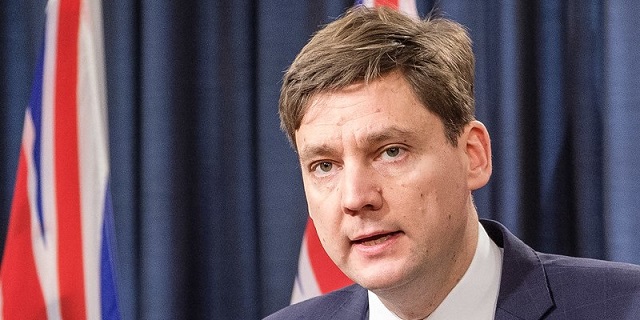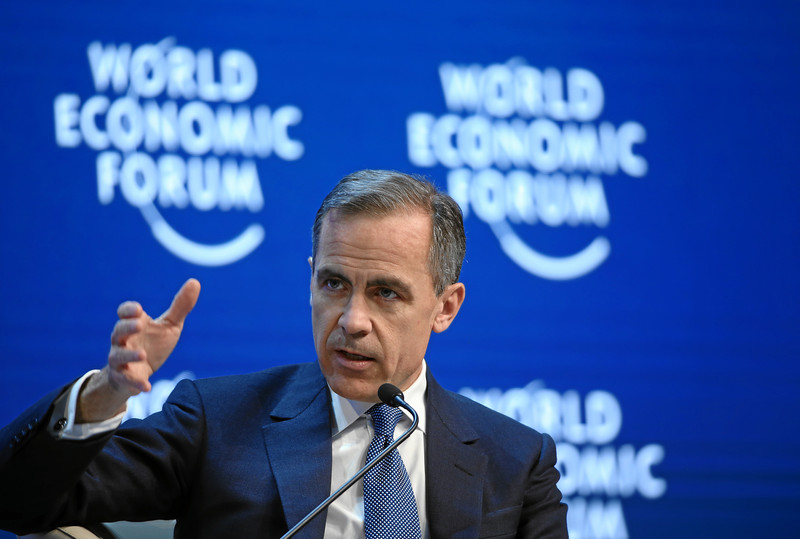Alberta
Alberta and B.C. budgets represent two different approaches to government finances

From the Fraser Institute
By Grady Munro and Tegan Hill
” for every $1 of additional revenue enjoyed by both provinces, the Eby government increased spending by more than $6 compared to 79 cents for the Smith government. “
In its recent budget, the Alberta government promised a new approach to provincial finances, with spending restraint and limited debt accumulation. While there’s still work to do, this is a far better approach than the reckless spending and massive debt accumulation of the British Columbia government.
The Smith government projects a $367 million surplus in 2024/25, followed by two more surpluses of $1.4 billion in 2025/26 and $2.6 billion in 2026/27. The government plans to use these surpluses largely to pay down debt, so although provincial net debt (financial assets minus liabilities) is expected to rise slightly in 2024/25 due to increased long-term capital spending (e.g. schools and highways), the debt is projected to decrease 4.1 per cent ($1.7 billion) from 2023/24 to 2026/27.
Alberta’s strong fiscal outlook is largely driven by historically high resource revenues. But while the government plans to increase program spending (total spending minus debt interest costs) nominally over the next three years, spending will grow at a slower rate than population growth and inflation—meaning spending will decline on an inflation-adjusted per-person basis.
The Smith government still must better align spending with stable revenues, but this is an important step in the right direction.
By contrast, B.C.’s 2024 budget projects a $7.9 billion deficit in 2024/25 followed by deficits of $7.8 billion in 2025/26 and $6.3 billion in 2026/27. These deficits, combined with borrowing for capital projects, will drive a projected $55.1 billion (74.7 per cent) increase in provincial net debt from 2023/24 to 2026/27. As a result, the level of net debt projected in 2026/27 ($128.8 billion) is nearly triple the level recorded in 2019/20 ($46.9 billion).
These deficits are due to a substantial increase in provincial spending by the Eby government. Indeed, similar to Alberta, B.C. has recently enjoyed an unexpected surge in revenues, but unlike the Smith government, the Eby government has shown no spending restraint.
From 2023/24 to 2025/26, revenues in B.C. will be a projected $2.0 billion higher than the government projected in last year’s budget, yet the plan for spending over that same period increased by $13.2 billion. For comparison, the Smith government also increased spending in these years relative to its 2023 budget, but did so by $2.1 billion less than the increase in revenues.
In other words, for every $1 of additional revenue enjoyed by both provinces, the Eby government increased spending by more than $6 compared to 79 cents for the Smith government.
The consequences of B.C.’s approach are clear. By spending far outside its means, the Eby government will saddle future generations of British Columbians with tens of billions more in debt that must be financed through taxes. For perspective, debt interest payments will nearly cost a projected $1,000 per British Columbian by 2026/27—that’s taxpayer money no longer available for programs or services. Moreover, continued deficits weaken the government’s ability to deal with future challenges (such as an economic downturn) without taking on more debt and driving up interest costs.
The Alberta and B.C. budgets provide examples of two different approaches to government finances. While there’s more to be done, Alberta is moving in the right direction to help prevent debt accumulation. On the other hand, B.C. is massively increasing spending and debt, to the detriment of British Columbians now and in the future.
Authors:
Alberta
Big win for Alberta and Canada: Statement from Premier Smith

Premier Danielle Smith issued the following statement on the April 2, 2025 U.S. tariff announcement:
“Today was an important win for Canada and Alberta, as it appears the United States has decided to uphold the majority of the free trade agreement (CUSMA) between our two nations. It also appears this will continue to be the case until after the Canadian federal election has concluded and the newly elected Canadian government is able to renegotiate CUSMA with the U.S. administration.
“This is precisely what I have been advocating for from the U.S. administration for months.
“It means that the majority of goods sold into the United States from Canada will have no tariffs applied to them, including zero per cent tariffs on energy, minerals, agricultural products, uranium, seafood, potash and host of other Canadian goods.
“There is still work to be done, of course. Unfortunately, tariffs previously announced by the United States on Canadian automobiles, steel and aluminum have not been removed. The efforts of premiers and the federal government should therefore shift towards removing or significantly reducing these remaining tariffs as we go forward and ensuring affected workers across Canada are generously supported until the situation is resolved.
“I again call on all involved in our national advocacy efforts to focus on diplomacy and persuasion while avoiding unnecessary escalation. Clearly, this strategy has been the most effective to this point.
“As it appears the worst of this tariff dispute is behind us (though there is still work to be done), it is my sincere hope that we, as Canadians, can abandon the disastrous policies that have made Canada vulnerable to and overly dependent on the United States, fast-track national resource corridors, get out of the way of provincial resource development and turn our country into an independent economic juggernaut and energy superpower.”
Alberta
Energy sector will fuel Alberta economy and Canada’s exports for many years to come

From the Fraser Institute
By any measure, Alberta is an energy powerhouse—within Canada, but also on a global scale. In 2023, it produced 85 per cent of Canada’s oil and three-fifths of the country’s natural gas. Most of Canada’s oil reserves are in Alberta, along with a majority of natural gas reserves. Alberta is the beating heart of the Canadian energy economy. And energy, in turn, accounts for one-quarter of Canada’s international exports.
Consider some key facts about the province’s energy landscape, as noted in the Alberta Energy Regulator’s (AER) 2023 annual report. Oil and natural gas production continued to rise (on a volume basis) in 2023, on the heels of steady increases over the preceding half decade. However, the dollar value of Alberta’s oil and gas production fell in 2023, as the surging prices recorded in 2022 following Russia’s invasion of Ukraine retreated. Capital spending in the province’s energy sector reached $30 billion in 2023, making it the leading driver of private-sector investment. And completion of the Trans Mountain pipeline expansion project has opened new offshore export avenues for Canada’s oil industry and should boost Alberta’s energy production and exports going forward.
In a world striving to address climate change, Alberta’s hydrocarbon-heavy energy sector faces challenges. At some point, the world may start to consume less oil and, later, less natural gas (in absolute terms). But such “peak” consumption hasn’t arrived yet, nor does it appear imminent. While the demand for certain refined petroleum products is trending down in some advanced economies, particularly in Europe, we should take a broader global perspective when assessing energy demand and supply trends.
Looking at the worldwide picture, Goldman Sachs’ 2024 global energy forecast predicts that “oil usage will increase through 2034” thanks to strong demand in emerging markets and growing production of petrochemicals that depend on oil as the principal feedstock. Global demand for natural gas (including LNG) will also continue to increase, particularly since natural gas is the least carbon-intensive fossil fuel and more of it is being traded in the form of liquefied natural gas (LNG).
Against this backdrop, there are reasons to be optimistic about the prospects for Alberta’s energy sector, particularly if the federal government dials back some of the economically destructive energy and climate policies adopted by the last government. According to the AER’s “base case” forecast, overall energy output will expand over the next 10 years. Oilsands output is projected to grow modestly; natural gas production will also rise, in part due to greater demand for Alberta’s upstream gas from LNG operators in British Columbia.
The AER’s forecast also points to a positive trajectory for capital spending across the province’s energy sector. The agency sees annual investment rising from almost $30 billion to $40 billion by 2033. Most of this takes place in the oil and gas industry, but “emerging” energy resources and projects aimed at climate mitigation are expected to represent a bigger slice of energy-related capital spending going forward.
Like many other oil and gas producing jurisdictions, Alberta must navigate the bumpy journey to a lower-carbon future. But the world is set to remain dependent on fossil fuels for decades to come. This suggests the energy sector will continue to underpin not only the Alberta economy but also Canada’s export portfolio for the foreseeable future.
-

 2025 Federal Election22 hours ago
2025 Federal Election22 hours agoMark Carney refuses to clarify 2022 remarks accusing the Freedom Convoy of ‘sedition’
-

 2025 Federal Election1 day ago
2025 Federal Election1 day agoPoilievre To Create ‘Canada First’ National Energy Corridor
-

 Bruce Dowbiggin24 hours ago
Bruce Dowbiggin24 hours agoAre the Jays Signing Or Declining? Only Vladdy & Bo Know For Sure
-

 2025 Federal Election1 day ago
2025 Federal Election1 day agoFixing Canada’s immigration system should be next government’s top priority
-

 Daily Caller23 hours ago
Daily Caller23 hours agoBiden Administration Was Secretly More Involved In Ukraine Than It Let On, Investigation Reveals
-

 2025 Federal Election2 days ago
2025 Federal Election2 days agoCanada Continues to Miss LNG Opportunities: Why the World Needs Our LNG – and We’re Not Ready
-

 Health2 days ago
Health2 days agoSelective reporting on measles outbreaks is a globalist smear campaign against Trump administration.
-

 2025 Federal Election2 days ago
2025 Federal Election2 days agoMark Carney is trying to market globalism as a ‘Canadian value.’ Will it work?


